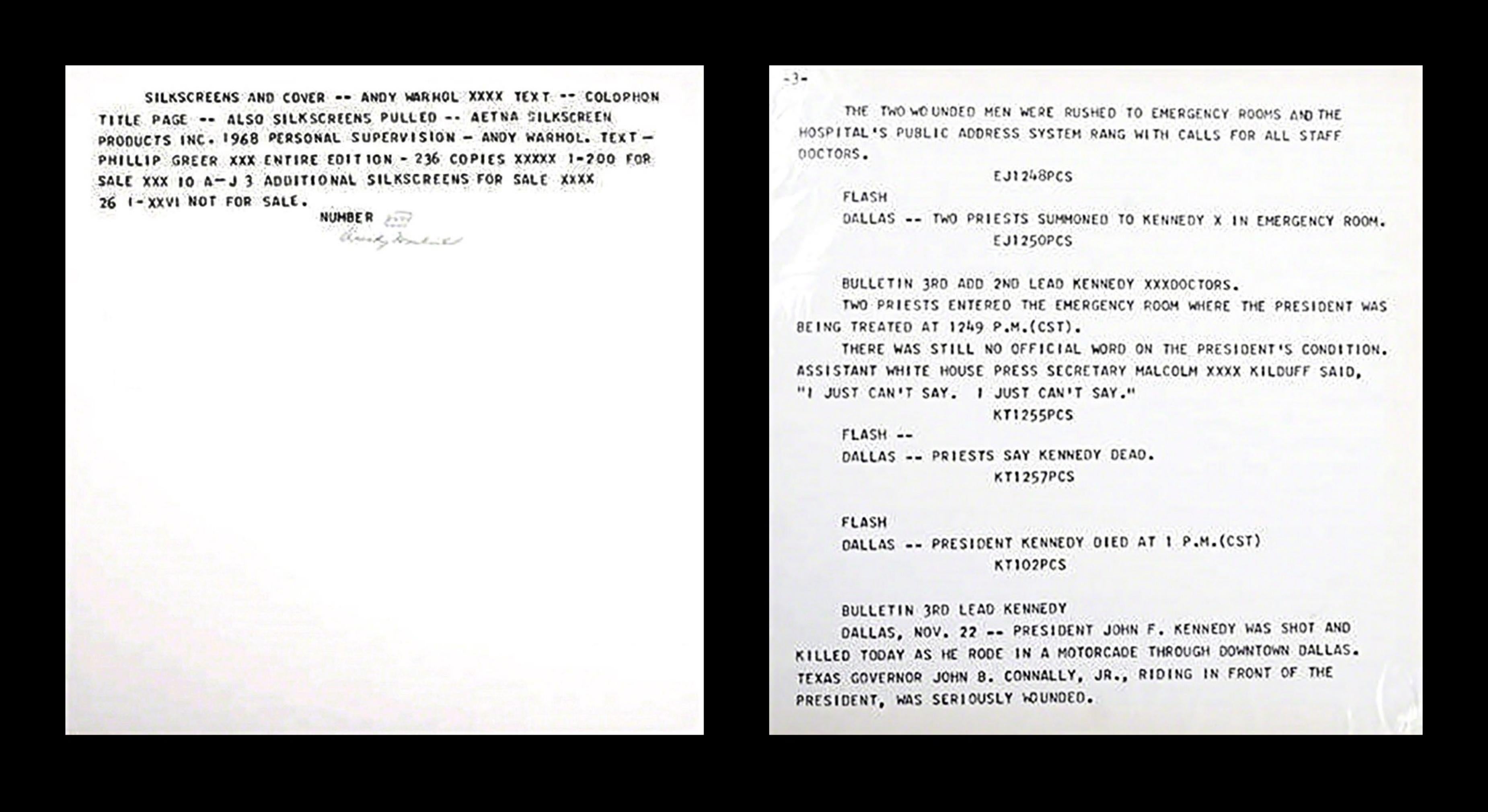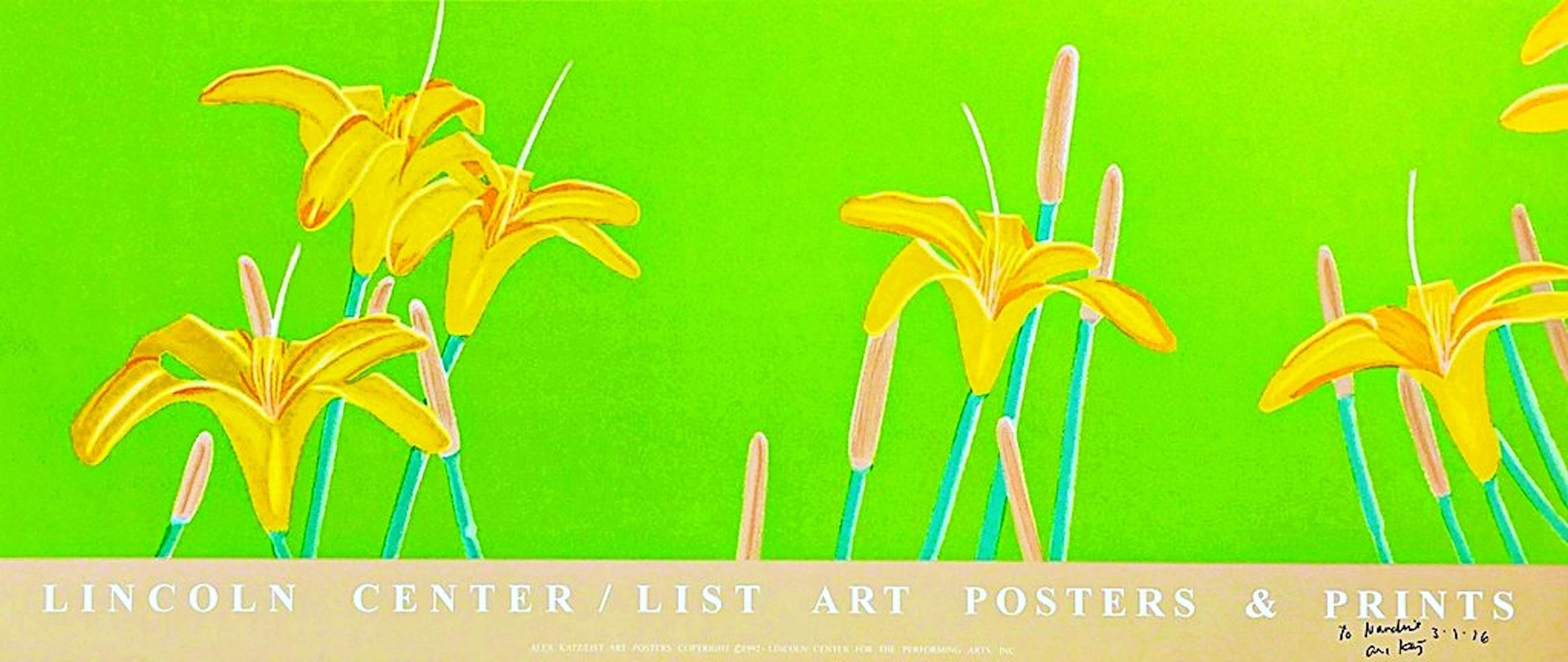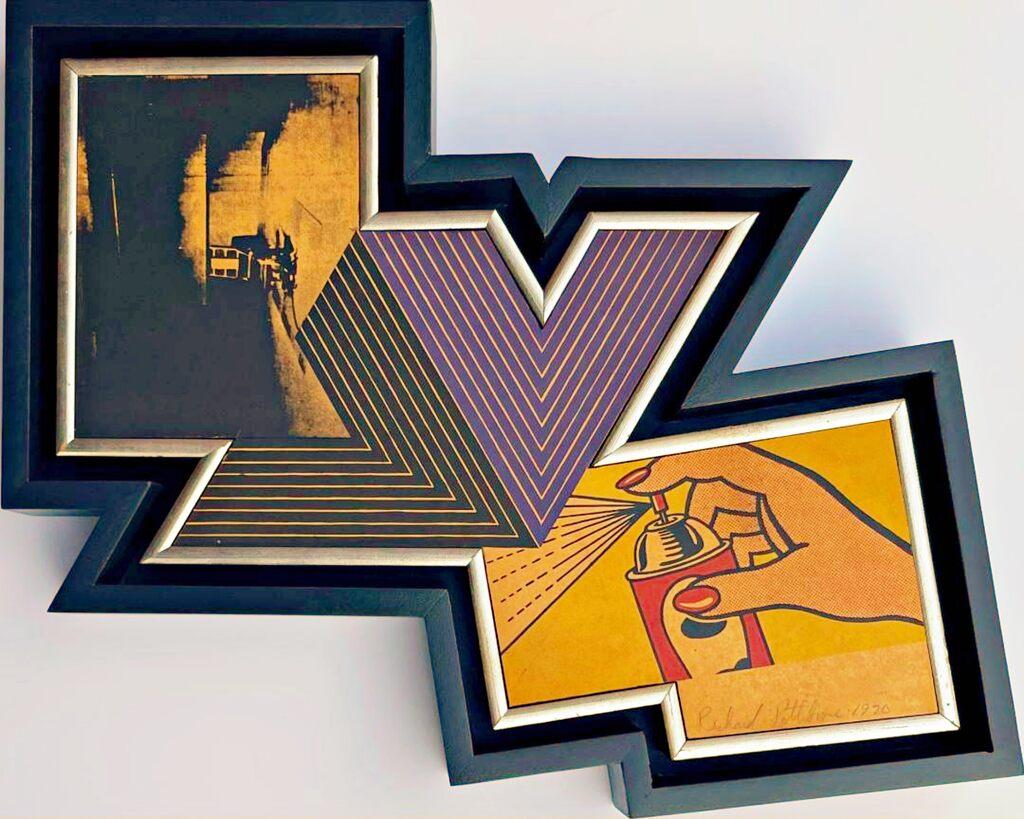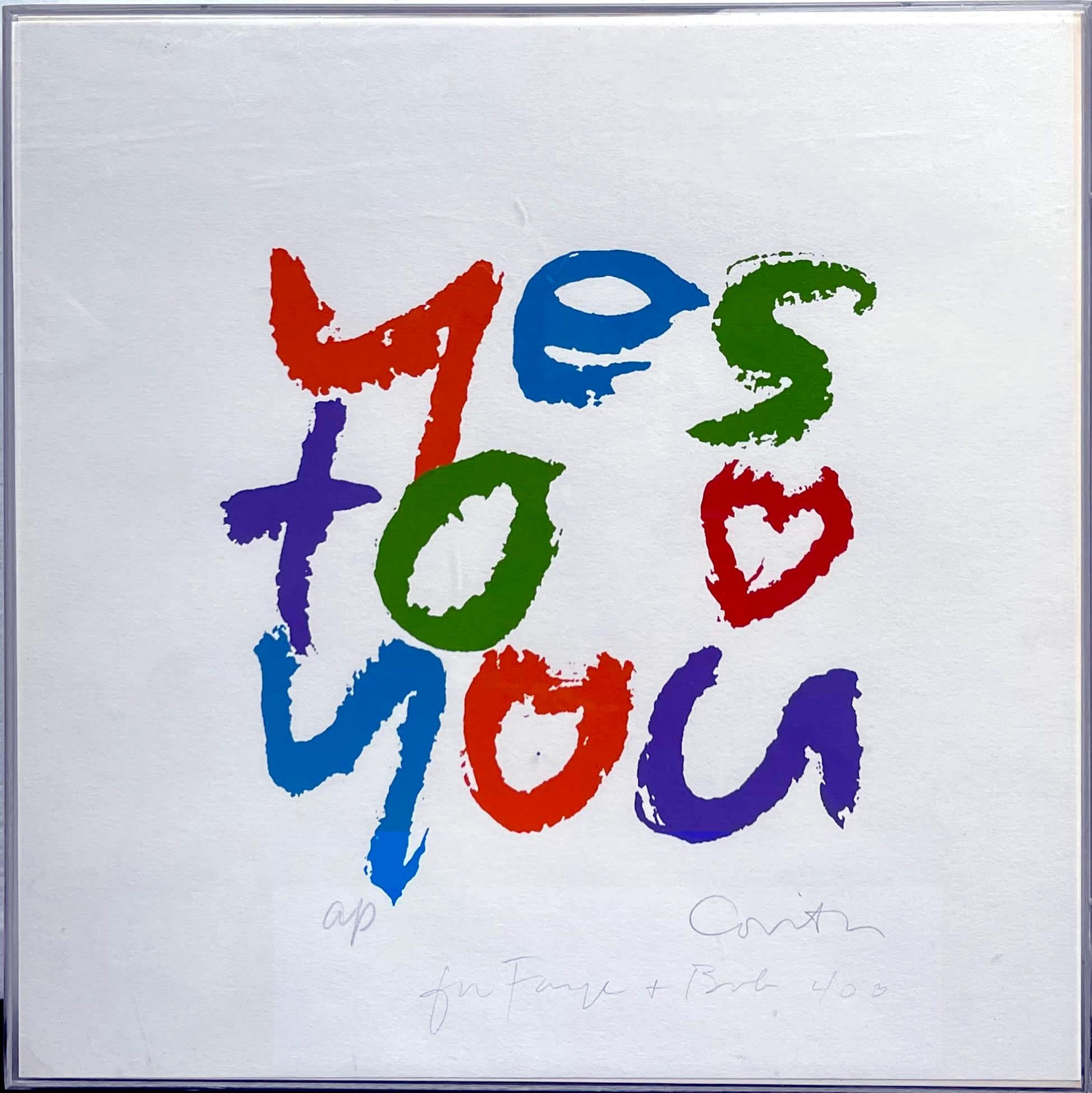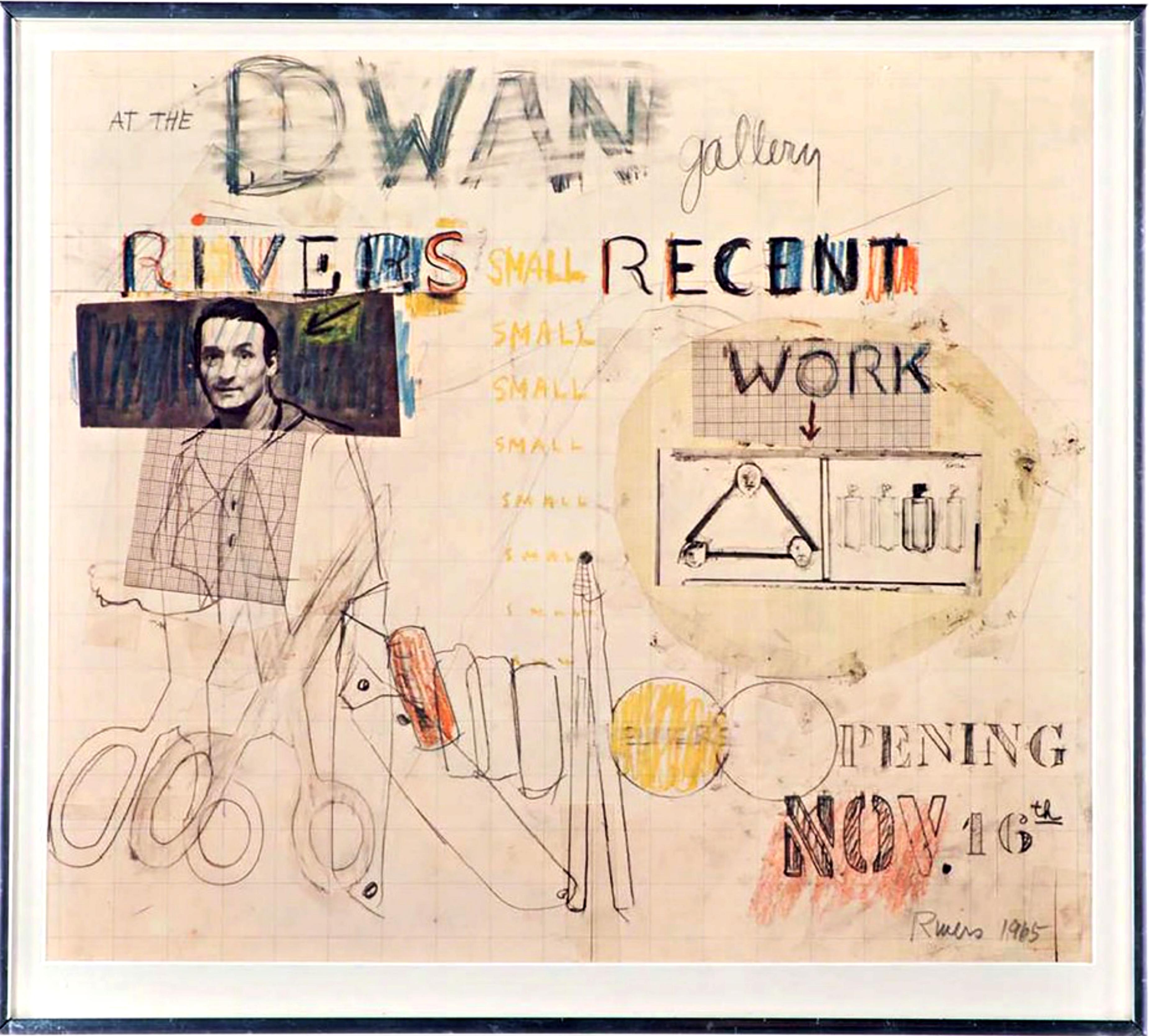Items Similar to Rare Op Art Mid Century Modern Geometric Abstraction 1960s Pop Art Signed 6/9
Want more images or videos?
Request additional images or videos from the seller
1 of 7
John GrilloRare Op Art Mid Century Modern Geometric Abstraction 1960s Pop Art Signed 6/9 1969
1969
About the Item
John Grillo
Untitled Op Art Mid Century Modern, 1969
Color silkscreen on art paper with deckled edges
Signed and dated lower right; numbered 6/9 lower left
Limited Edition of only 9
Unframed
The present work is a dazzling, extremely rare 1960s screenprint by Abstract Expressionist painter John Grillo, who died in 2014 at the age of 97. Hand signed and numbered from a small edition of only 9, it is a fusion of Op Art, Pop and Abstract Expressionist elements, in a vibrant palette anchored in red - a nod to the psychedelic colors of the late 1960s. It is in very good condition with deckled edges
John Grillo Biography
A leading exponent of Bay Area Abstract Expressionism during the 1940s, John Grillo was a painter, sculptor, and printmaker regarded as one the purest and most influential “action painters” on the West Coast. Though his diverse and colorful body of work ranged from abstraction to figuration, his art is considered linked in its uniquely aggressive and spontaneous approach. Grillo creates bold, fluid, gestural works such as Untitled #69 (1947) and Untitled (1949) that draw on the influence of Surrealist automatism. After moving to New York in 1948, Grillo began a series of paintings consisting of small, precisely organized colored squares, as seen in Untitled (1951) and Untitled (1959); these and other works were influenced by the color theories of Hans Hofmann, with whom he studied. Grillo’s later work was more figurative, but no less colorful, with works such as Blue Hat (1978) or Duerme (1980) recalling the Expressionism of Max Beckmann.
- Creator:John Grillo (1917, American)
- Creation Year:1969
- Dimensions:Height: 27.75 in (70.49 cm)Width: 22.5 in (57.15 cm)Depth: 0.1 in (2.54 mm)
- Medium:
- Movement & Style:
- Period:
- Condition:
- Gallery Location:New York, NY
- Reference Number:1stDibs: LU1745212955512
About the Seller
5.0
Platinum Seller
These expertly vetted sellers are 1stDibs' most experienced sellers and are rated highest by our customers.
Established in 2007
1stDibs seller since 2022
292 sales on 1stDibs
Typical response time: 1 hour
- ShippingRetrieving quote...Ships From: New York, NY
- Return PolicyA return for this item may be initiated within 1 day of delivery.
More From This SellerView All
- The Golden Future of America (Sheehan, 92)By Robert IndianaLocated in New York, NYRobert Indiana The Golden Future of America (Sheehan, 92), 1976 Silkscreen on Arches paper Signed and dated in pencil, lower right; numbered 13/175, in pencil, lower left. Also bears printers blind stamp Frame included: Elegantly matted and framed in a handmade wood frame On its face, this Robert Indiana's silkscreen, based upon the eponymous painting "The Golden Future of America", is a patriotic celebration of Americana, done for the country's bicentennial year. But its looks are deceptive, as the work has a far more subversive meaning. In 2014, the Art Newspaper...Category
1970s Pop Art Abstract Prints
MaterialsScreen, Pencil
- Flash portfolio colophon page, JFK Assassination (Hand signed)By Andy WarholLocated in New York, NYAndy Warhol Flash portfolio colophon pages, JFK Assassination, 1968 2 Separate Silkscreens: (1) Silkscreen text on paper and teletype text; (2) colophon sheet in pencil and numbered XVII (from the edition of 26 (roman numerals) Hand-signed by artist, two silkscreen prints; the colophon sheet is hand signed by Andy Warhol; no signature on sheet with teletype 21 1/2 × 21 1/2 inches Unframed Note: measurements are for each sheet Catalogue Raisonne Reference: FS II.32-42 (not illustrated) Silkscreened colophon sheet of the edition XVII of the iconic "Flash" Portfolio; hand signed and uniquely numbered by Andy Warhol, plus silkscreened print with teletype text. These two prints from Warhol's iconic "Flash Portfolio" were selected for inclusion in the blockbuster Andy Warhol retrospective at the Whitney Museum in 2019. (see photos). The plaque on the Whitney exhibition (also see included photo) describes the portfolio as follows:" These screenprints reflect Warhol's ongoing interest in the Kennedy assassination, an obsession that intensified following the release of the Warren Commission report and the publication of stills from a short home movie of the event, published by bystander Abraham Zapruder. Flash - November 22, 1963 is an unbound Artists Book with text based upon the original Associated Press newswire bulletins. For his illustrations, Warhol appropriated the recurring image of Kennedy from a 1960 campaign poster, and sourced the remaining photographs, including pictures of Lee Harvey Oswald and an ad for the type of rifle used, from Life's [Magazine] sustained coverage of the assassination and its aftermath.." The present sheet begins with the following teletyped text: "THE TWO WOUNDED MEN WERE RUSHED TO EMERGENCY ROOMS, AND THE HOSPITAL'S PUBLIC ADDRESS SYSTEM RANG WITH CALLS FOR ALL STAFF DOCTORS. FLASH DALLAS - TWO PRIESTS SUMMONED TO KENNEDY X IN EMERGENCY ROOM BULLETIN 3RD ADD 2ND LEAD KENNEDY XX DOCTORS TWO PRIESTS ENTERED THE EMERGENCY ROOM WHERE THE PRESIDENT WAS BEING TREATED AT 12:49 P.M. (CST). THERE WAS STILL NO OFFICIAL WORD ON THE PRESIDENT'S CONDITION. ASSISTANT WHITE HOUSE PRESS SECRETARY MALCOLM XXX KILDUFF SAID "I JUST CAN'T SAY. I JUST CAN'T SAY." FLASH -- PRIESTS SAY KENNEDY DEAD. .""" (the text on the page continues; this is just a partial excerpt.) Racolin Press, Briarcliff Manor, New York Two Andy Warhol silkscreens on white wove paper comprising the signed colophon and text pages of his iconic 1968 "Flash" Portfolio, as well as Warhol's wraparound silkscreen of the distinctive teletype text. The colophon page silkscreen is hand signed by Andy Warhol and uniquely numbered XVII in pencil from the edition of 26, which, it expressly states, was not for sale. The second silkscreen sheet features teletype print describing events surrounding the assassination of President John F. Kennedy - the defining event of a generation as contemporaneously re-imagined by the most important Pop artist of the era. Warhol created the "Flash - November 22, 1963" portfolio of prints in 1968 to depict the continuing media spectacle surrounding JFK's assassination. He named the portfolio after the news flash Teletype texts that reported the assassination and its aftermath - the first major news event played out live on TV. The Flash portfolio includes a series of eleven silkscreens depicting President Kennedy smiling broadly, a presidential seal with bullet holes through it, and other symbolic representations of that tragedy. The portfolio's cover includes an image of the New York World-Telegram front page with the headline "President Shot Dead." Warhol used screen printed...Category
1960s Pop Art Abstract Prints
MaterialsScreen, Pencil
- Day Lilies (Hand Signed and Inscribed by Alex Katz)By Alex KatzLocated in New York, NYAlex Katz Day Lilies (Hand Signed and Inscribed by Alex Katz), 1992 Silkscreen on wove paper Boldly signed, inscribed and dated on the lower, right front in black marker by Alex Katz...Category
1990s Pop Art Still-life Prints
MaterialsScreen, Pencil, Graphite
- The Appropriation piece: Andy Warhol, Frank Stella, Roy Lichtenstein Unique var.By Richard PettiboneLocated in New York, NYRichard Pettibone The Appropriation Print Andy Warhol, Frank Stella, Roy Lichtenstein, 1970 Silkscreen in colors on masonite board (unique variant on sculpted board) Hand-signed by artist, Signed and dated on the front (see close up image) Bespoke frame Included This is a rare example of Pettibone's iconic Appropriation Print, as it's silkscreened and sculpted on masonite board rather than paper, giving it a different background hue, and enabling it work to be framed so uniquely. The Appropriation print is one of the most coveted prints Pettibone ever created ; the regular edition is on a full sheet with white background; the present example was silkscreened on board, allowing it to be framed in 3-D. While we do not know how many examples of this graphic work Pettibone created, so far the present work is the only one example we have ever seen on the public market since 1970. (Other editions of The Appropriation Print have been printed on vellum, wove paper and pink and yellow paper.) This 1970 homage to Andy Warhol, Frank Stella and Roy Lichtenstein exemplifies the type of artistic appropriation he was engaging in early on during the height of the Pop Art movement - long before more contemporary artists like Deborah Kass, Louise Lawler, etc. followed suit. This silkscreen was in its original 1970 vintage period frame; a bespoke custom hand cut black wood outer frame was subsequently created especially to house the work, giving it a distinctive sculptural aesthetic. Measurements: Framed 14.5 inches vertical by 18 inches horizontal by 2 inches Work 13 inches vertical by 16.5 inches horizontal Richard Pettibone biography: Richard Pettibone (American, b.1938) is one of the pioneering artists to use appropriation techniques. Pettibone was born in Los Angeles, and first worked with shadow boxes and assemblages, illustrating his interest in craft, construction, and working in miniature scales. In 1964, he created the first of his appropriated pieces, two tiny painted “replicas” of the iconic Campbell’s soup cans by Andy Warhol (American, 1928–1987). By 1965, he had created several “replicas” of paintings by American artists, such as Warhol, Roy Lichtenstein (1923–1997), Ed Ruscha (b.1937), and others, among them some of the biggest names in Pop Art. Pettibone chose to recreate the work of leading avant-garde artists whose careers were often centered on themes of replication themselves, further lending irony to his work. Pettibone also created both miniature and life-sized sculptural works, including an exact copy of Bicycle Wheel by Marcel Duchamp (French, 1887–1968), and in the 1980s, an entire series of sculptures of varying sizes replicating the most famous works of Constantin Brancusi (Romanian, 1876–1957). In more recent years, Pettibone has created paintings based on the covers of poetry books by Ezra Pound, as well as sculptures drawn from the grid compositions of Piet Mondrian (Dutch, 1872–1944). Pettibone straddles the lines of appropriation, Pop, and Conceptual Art, and has received critical attention for decades for the important questions his work raises about authorship, craftsmanship, and the original in art. His work has been exhibited at the Institute for Contemporary Art in Philadelphia, the Museum of Modern Art in New York, the Museum of Contemporary Art in Miami, and the Laguna Art Museum in Laguna Beach, CA. Pettibone is currently based in New York. "I wished I had stuck with the idea of just painting the same painting like the soup can and never painting another painting. When someone wanted one, you would just do another one. Does anybody do that now?" Andy Warhol, 1981 Since the mid-1960s, Richard Pettibone has been making hand-painted, small-scale copies of works by other artists — a practice due to which he is best known as a precursor of appropriation art — and for a decade now, he has been revisiting subjects from across his career. In his latest exhibitions at Castelli Gallery, Pettibone has been showing more of the “same” paintings that had already been part of his 2005–6 museum retrospective,1 and also including “new” subject matter drawn from his usual roster of European modernists and American postwar artists. Art critic Kim Levin laid out some phases of the intricate spectrum from copies to repetitions in her review of the Warhol-de Chirico showdown, a joint exhibition at the heyday of appropriation art in the mid-1980s when Warhol’s appropriations of de Chirico’s work effectively revaluated “the grand old auto-appropriator”. Upon having counted well over a dozen Disquieting Muses by de Chirico, Levin speculated: “Maybe he kept doing them because no one got the point. Maybe he needed the money. Maybe he meant it when he said his technique had improved, and traditional skills were what mattered.” On the other side, Warhol, in her eyes, was the “latter-day exemplar of museless creativity”. To Pettibone, traditional skills certainly still matter, as he practices his contemporary version of museless creativity. He paints the same painting again and again, no matter whether anybody shows an interest in it or not. His work, of course, takes place well outside the historical framework of what Levin aptly referred to as the “modern/postmodern wrestling match”, but neither was this exactly his match to begin with. Pettibone is one of appropriation art’s trailblazers, but his diverse selection of sources removes from his work the critique of the modernist myth of originality most commonly associated with appropriation art in a narrow sense, as we see, for example, in Sherrie Levine’s practice of re-photographing the work of Walker Evans and Edward Weston. In particular, during his photorealist phase of the 1970s, Pettibone’s sources ranged widely across several art-historical periods. His appropriations of the 1980s and 1990s spanned from Picasso etchings and Brancusi sculptures to Shaker furniture and even included Ezra Pound’s poetry. Pettibone has professed outright admiration for his source artists, whose work he shrinks and tweaks to comic effect but, nevertheless, always treats with reverence and care. His response to these artists is primarily on an aesthetic level, owing much to the fact that his process relies on photographs. By the same token, the aesthetic that attracts him is a graphic one that lends itself to reproduction. Painstakingly copying other artists’ work by hand has been a way of making it his own, yet each source is acknowledged in his titles and, occasionally, in captions on white margins that he leaves around the image as an indication that the actual source is a photographic image. The enjoyment he receives in copying is part of the motivation behind doing it, as is the pleasure he receives from actually being with the finished painting — a considerable private dimension of his work. His copies are “handmade readymades” that he meticulously paints in great quantities in his studio upstate in New York; the commitment to manual labor and the time spent at material production has become an increasingly important dimension of his recent work. Pettibone operates at some remove from the contemporary art scene, not only by staying put geographically, but also by refusing to recoup the simulated lack of originality through the creation of a public persona. In so doing, Pettibone takes a real risk. He places himself in opposition to conceptualism, and he is apprehensive of an understanding of art as the mere illustration of an idea. His reading of Marcel Duchamp’s works as beautiful is revealing about Pettibone’s priorities in this respect. When Pettibone, for aesthetic pleasure, paints Duchamp’s Poster...Category
1970s Pop Art Mixed Media
MaterialsMasonite, Pencil, Screen, Mixed Media
- Yes to You, silkscreen, pencil signed Artists Proof with heart (regular ed. 200)By Corita KentLocated in New York, NYCorita Kent Yes to You, 1979 Color silkscreen Hand signed, numbered and uniquely inscribed with a heart doodle by the artist on the front. Artists Proof (aside from the regular editi...Category
1970s Pop Art Abstract Prints
MaterialsScreen, Pencil
- At The Dwan Gallery: Historic exhibition poster (Hand Signed by Larry Rivers)By Larry RiversLocated in New York, NYLarry Rivers At The Dwan Gallery: Rivers Small Recent Work (Hand Signed), 1965 Silkscreen on wove paper Hand signed and dated "Rivers, 1965" in graphite pencil lower right front Fram...Category
1960s Pop Art Abstract Prints
MaterialsScreen, Pencil
You May Also Like
- PurimBy Larry RiversLocated in New York, NYA very good impression of this scarce, early color lithograph with additions in pencil and crayon on Auvergne à la main (Richard de bas) ivory laid paper. Signed, dated and numbered 15/45 in pencil, lower margin. Printed by Robert Blackburn...Category
1960s Pop Art Abstract Prints
MaterialsCrayon, Pencil, Color, Lithograph
- Fire Bridge, Pop Art Screenprint by Robert IndianaBy Robert IndianaLocated in Long Island City, NYArtist: Robert Indiana, American (1928 - ) Title: Fire Bridge: Chrysler Museum at Norfolk, December 1 - January 15 Year: circa 1965 Medium: Screenprint on Fabriano Paper Size: 30 x ...Category
1960s Pop Art Abstract Prints
MaterialsScreen
- BrushstrokesBy Roy LichtensteinLocated in Miami, FLHand-signed rf Lichtenstein in pencil and numbered 245/300. Published by Leo Castelli Gallery, for the Pasadena Art Museum, California. The Prints of Roy Lichtenstein A Catalogue Rai...Category
1960s Pop Art Figurative Prints
MaterialsScreen
- Ups and DownsBy KAWSLocated in New York, NY2013 The complete set of 10 screenprints in colors Sheet: 35 x 23 inches, each Edition of 100 Each signed, dated and numbered in pencil Contained in original portfolio boxCategory
2010s Pop Art Abstract Prints
MaterialsScreen
- HOPE (R/W/B) LARGE 4 PANEL PAINTINGBy Robert IndianaLocated in Aventura, FLOil and Silkscreen ink on triple primed canvas. Hand signed, dated, titled and inscribed "P/P" on verso by Robert Indiana. Printer's Proof edition. Total of 4 panels. Each panel ...Category
Early 2000s Pop Art Abstract Prints
MaterialsCanvas, Oil, Screen
- Archipiélago dinámicoBy Luis GordilloLocated in Mexico City, MXThe work of Luis Gordillo spans more than five decades. He began his career by developing a new pictorial language that became a point of reference for an entire generation of artist...Category
20th Century Pop Art Abstract Prints
MaterialsScreen
Recently Viewed
View AllMore Ways To Browse
1960s Modern Art
Red Mid Century Art
1960s Geometric Art
Midcentury Pop Art
Vintage Blue Hat
Vintage Anchor Art
Midcentury Pop Prints
Midcentury Modern Op Art
Vintage Painters Hat
Midcentury Screen Geometric
1960s Psychedelic
Midcentury Silkscreens
Retro Psychedelic Pop Art
1960s Dior Hat
John Grillo On Sale
Vintage Lighted Advertising Sign
Max Ernst Signed Lithograph
German Light Tokyo

